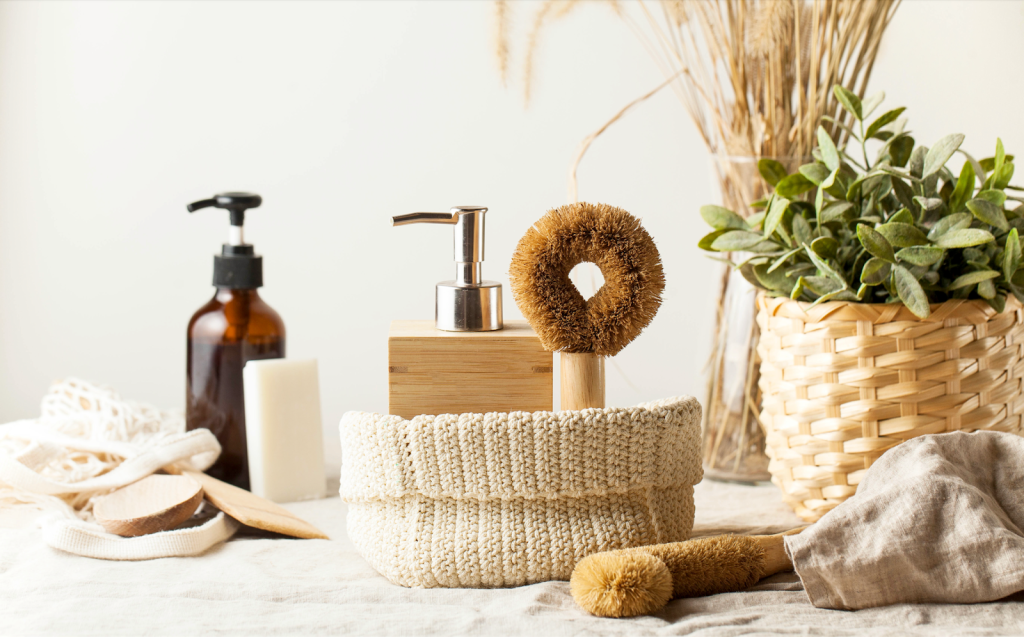If, like many of us, you are hoping to learn more about living sustainably this year, we thought we’d start by clearing up a few myths. These myths only add to the confusion, when in reality, sustainable living can be remarkably simple. We’ve rounded up some of the most common misconceptions and explain why they may not be so accurate. Here are five of the most popular sustainability myths, debunked.
‘Clean’ Or ‘Natural’ = Sustainable
Many of us begin our sustainable living journeys through the everyday items we buy for ourselves or our homes. Personal care products and cleaning products are things we use almost daily, so experimenting with sustainable versions is a great place to start. When we see the words ‘clean’ or ‘natural’ on a product, we tend to assume this means it is environmentally friendly and therefore the best option available. There are other important factors to take into account, though, including the product’s packaging, how far it travelled, and how it was transported. If the product requires batteries, it isn’t recyclable, or wrapped in plastic, it is likely no longer a better alternative. Considering product packaging is an easy way to get started!
Recycling Is Enough
Recycling is important, of course, and helps keep items out of landfills. It may not, however, be quite enough. We tend to rely a little too much on recycling, which should actually be the last resort. Reduce, reuse, repair, repurpose, rethink – these are the steps we should consider first.
Unfortunately, not every item that can be recycled gets recycled – a lot (25%) never makes it to the local recycling plant in the first place.
There are two things that can help. First, try to reduce consumption in the first place, by buying less or refilling what you already own. This will help reduce the load on your local recycling plant. Second, be diligent about recycling properly. Wash out any containers that have contained food, remove any parts that are not actually recyclable, and verify that your local recycling service actually does take each of the items you’re sending their way.
Sustainability Is Too Expensive
If you’re worried that living sustainably will cost too much, keep in mind that the ultimate goal is to consume less overall. So while, yes, you may be investing now in glass containers for your cleaning products, for example, the long-term goal is that over time you will purchase fewer items. The other option is using a local refillery or zero-waste service, as they can refill your current containers (plastic or glass) indefinitely, saving you from having to purchase any more packaged products in the future. Sustainability experts recommend using what you already have and thinking more critically about future purchases.
Sustainability Is All Or Nothing
You don’t have to make huge, sweeping changes or be the perfect embodiment of sustainable living – every improvement counts. You’ll have much more success if you make changes one at a time, get your family members on board, and create some new habits that stick. Start with three goals and track your success. Good starter projects could include making the switch to green cleaning solutions for your home, shopping at a zero-waste store to refill items you’ve run out of (and avoid bringing any new packaging into the house), and experimenting with clean brands that use minimal, earth-friendly packaging.
Sustainable Products Aren’t Very Effective
Looking for sustainable versions of products you can swap for your old favourites can take a bit of trial and error. Fortunately there are a lot of high-quality, Canadian-made offerings available. Shop online for a wide selection of the best brands at Simply Natural Canada or the Pretty Clean Shop – these are just two of many sites you can try. For specific recommendations, take advantage of the great work being done by some of the experts in this space (also local and Canadian!), such as Candice Batista’s The Eco Hub. Not to mention, baking soda and vinegar is a powerhouse cleaning combo that cleans just about anything from sinks and drains, to laundry and floors.
Shifting towards a more sustainable lifestyle is definitely within reach and small changes do count. Thank you for reading and don’t forget to follow along with the Caliber blog for more sustainable living tips.


